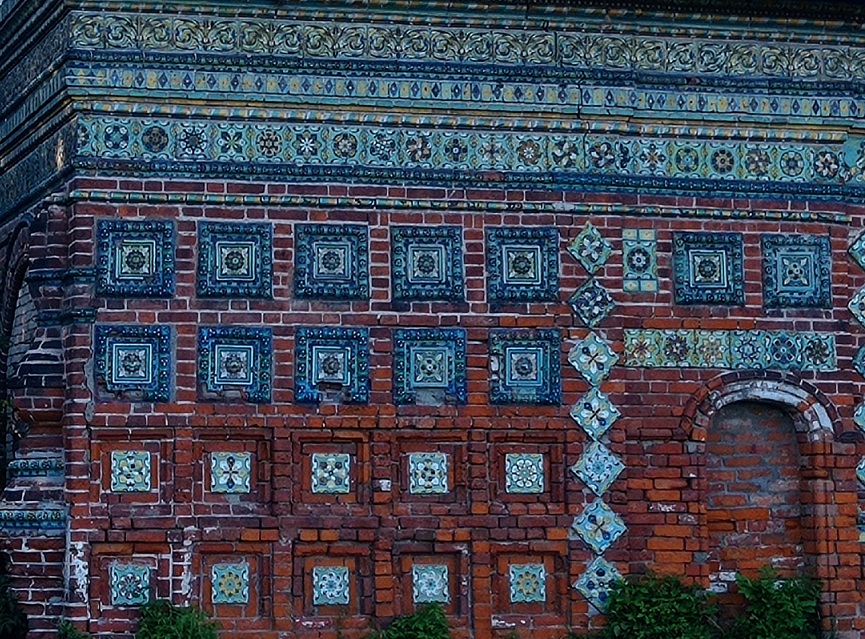Izraztsy: Exploring the History of Russian Glazed Tile Art
Hello readers! Today I am super excited to share an interesting story about a distinctive Russian art form, Izraztsy. It's been too long since I have spoken about painting and art, and while scrolling over facts, I found such an engrossing art form that will surely hook you! It's an art of glazed tiles, so without wasting a second, let's explore the history together and uncover the stories held in every colourful tile, each and every design carved out by skilled hands.
Initially, the izrazets played a quite special role in Russian applied arts and households. These tiles were used on a wide scale, from tiled stoves and window aprons to decor, bas-reliefs, and friezes.
The term Izrazets, is a Russian term derived from the term "obrazets," which means "sample" and refers to ceramic decorations for the outside walls of churches and palaces as well as the lining of stoves in large chambers. The izrazets often resembled a box of kilned clay without a cover. A painted or raised design was applied to the front side of the box's bottom, which was then frequently coated with coloured, transparent, flowing, or opaque enamel.
The influence of Byzantium and the Middle East can be seen in the tradition of creating glazed tiles in Russia. During the mediaeval period, there were substantial economic and cultural exchanges between Russia and Byzantium. As Byzantium had highly developed pottery and tile-making industries, it influenced and helped the development of glazed tile artwork in Russia, including that from Persia and Central Asia.
The prevalence of glaze styles was more prevalent in Russian architecture during the era of the Golden Horde (13th to 15th centuries), a Mongol power that ruled over portions of eastern Europe, the Middle East, and Asia. The advent of glazed tile methods in the region is probably due to the Mongols and their connections with Persia and the Middle East.
Russia's own brand of glazed tile craftsman shapes emerged in the late mediaeval and early modern period. By introducing native patterns and concepts, artists from Russia redefined and enhanced the abilities they had acquired through trade and cultural contacts.
In the 15th and 16th centuries, Moscow developed into a primary Nexus for the production of izrazets. The Moscow school of tile making was established with the emergence of its own unique style that frequently incorporated floral, geometric, and religious elements.
These tiles were used to ornament churches, cathedrals, and palaces, enhancing the splendour and grandeur of Moscow's architectural environment. The orthodox church had been greatly encouraged to promote and use glazed tiles, especially in churches. Exquisite child patterns with religious things and symbols decorated the exteriors and interiors of charges and monasteries in all of Russia.
The manufacture of tiles continued and eventually improved during the Imperial Empire. The designs and placement of izrazets in palaces and government structures were inspired by the orders of the imperial court. Despite several obstacles, attempts were made to maintain the Izraztsy tile-making traditions during the Soviet era. Some craftspeople kept making glazed tiles while often adjusting to the fluctuating political and social climate by retaining the methods and styles.
Izraztsy tiles were used by the Russian artists as a means of expressing creativity and as an opportunity to exhibit their expertise and originality. Russia facilitated the broad spectrum of designs that highlighted the varied cultural background of the nation as a whole.
If you watch carefully, you will notice that many tiles have religious items, which include biblical scenes, saints, angels, and other sacred items. You can frequently encounter these tiles as an essential component of religious construction. Other than religious stories, these glazed tiles of Russia often carry symbolic meanings related to Russian folklore, mythology, and historical events.
Izraztsy tiles' production methods and patterns have impacted other Russian decorative arts, including porcelain, ceramics, and pottery. These methods have been handed down through the ages and keep motivating modern artists and craftspeople.
Wrapping up our journey through the amazing history of Izraztsy, I'm reminded of how beautiful and interesting history can be. The bright colours and patterns on these tiles teach us about creativity, the past, and the awesome culture they come from. I hope you now see how amazing these tiles are and how they tell a story of smart, creative people from way back. Until we venture into our next historical story, let's keep discovering and celebrating the cool things that make us who we are! Keep exploring, history fans!






Comments
Post a Comment